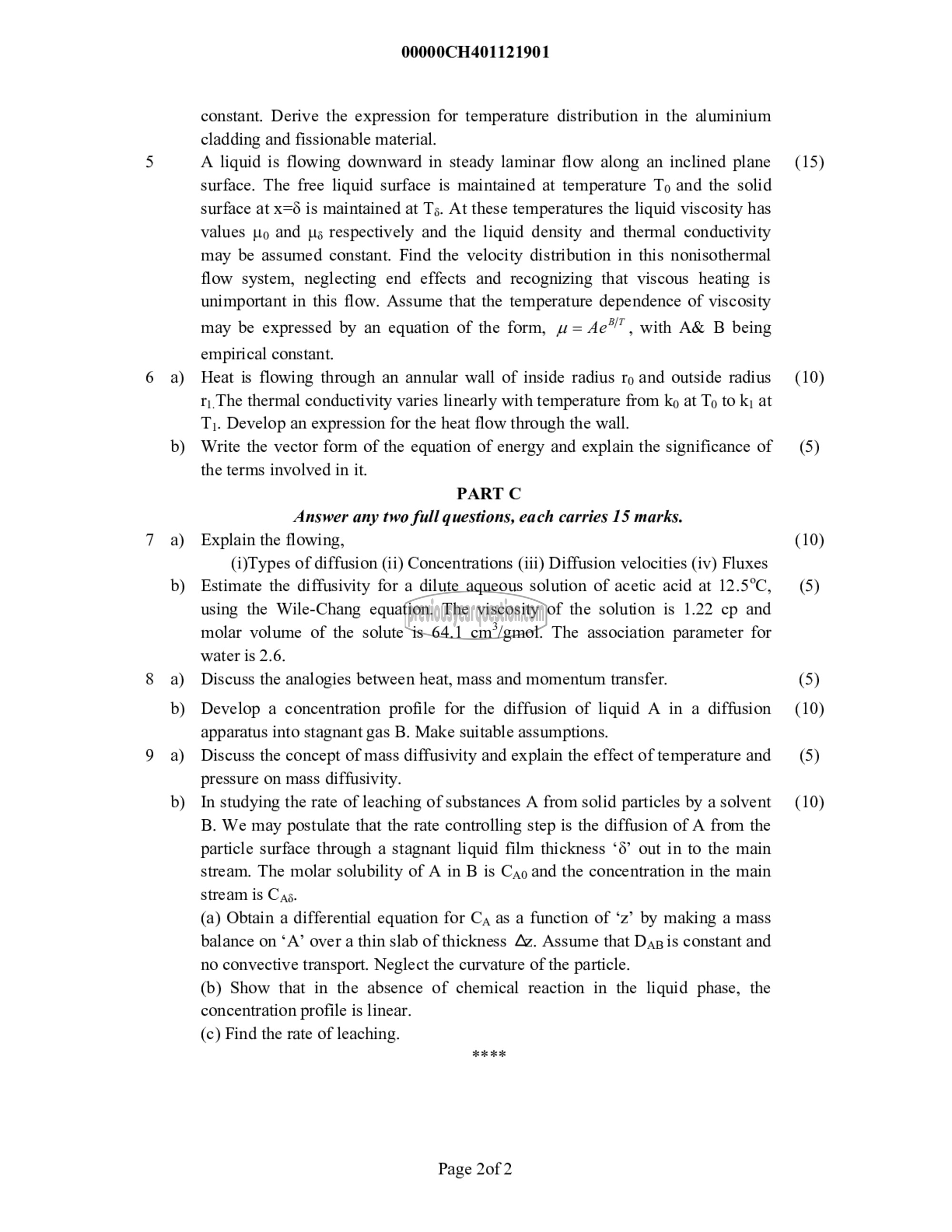APJ ABDUL KALAM TECHNOLOGICAL UNIVERSITY Previous Years Question Paper & Answer
Semester : SEMESTER 7
Subject : Transport Phenomena in Processes
Year : 2020
Term : DECEMBER
Branch : CHEMICAL ENGINEERING
Scheme : 2015 Full Time
Course Code : CH 401
Page:2
a)
b)
a)
b)
a)
b)
a)
b)
00000CH401121901
constant. Derive the expression for temperature distribution in the aluminium
cladding and fissionable material.
A liquid is flowing downward in steady laminar flow along an inclined plane
surface. The free liquid surface is maintained at temperature To and the solid
surface at x=6 is maintained at Ts. At these temperatures the liquid viscosity has
values படி and படி respectively and the liquid density and thermal conductivity
may be assumed constant. Find the velocity distribution in this nonisothermal
flow system, neglecting end effects and recognizing that viscous heating is
unimportant in this flow. Assume that the temperature dependence of viscosity
may be expressed by an equation of the form, w= 46717 , with A& 8 being
empirical constant.
Heat is flowing through an annular wall of inside radius ro and outside radius
r, The thermal conductivity varies linearly with temperature from ko at To to k; at
11. Develop an expression for the heat flow through the wall.
Write the vector form of the equation of energy and explain the significance of
the terms involved in it.
PART C
Answer any two full questions, each carries 15 marks.
Explain the flowing,
(i)Types of diffusion (ii) Concentrations (iii) Diffusion velocities (iv) Fluxes
Estimate the diffusivity for a dilute aqueous solution of acetic acid at 12.5°C,
using the Wile-Chang equation. The viscosity of the solution is 1.22 ep and
molar volume of the solute is 64.1 cm*/gmol. The association parameter for
water is 2.6.
Discuss the analogies between heat, mass and momentum transfer.
Develop a concentration profile for the diffusion of liquid A in a diffusion
apparatus into stagnant gas B. Make suitable assumptions.
Discuss the concept of mass diffusivity and explain the effect of temperature and
pressure on mass diffusivity.
In studying the rate of leaching of substances A from solid particles by a solvent
B. We may postulate that the rate controlling step is the diffusion of A from the
particle surface through a stagnant liquid film thickness ‘8’ out in to the main
stream. The molar solubility of A in B is Cao and the concentration in the main
stream is Cag.
(a) Obtain a differential equation for தே as a function of “മ് by making a mass
balance on ‘A’ over a thin slab of thickness Az. Assume that Dap 15 constant and
no convective transport. Neglect the curvature of the particle.
(b) Show that in the absence of chemical reaction in the liquid phase, the
concentration profile is linear.
(c) Find the rate of leaching.
मद मे मै मर
Page 2082
(15)
(10)
(5)
(10)
(5)
(5)
(10)
(5)
(10)
